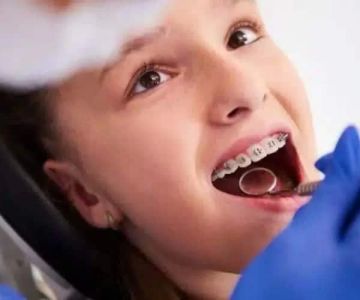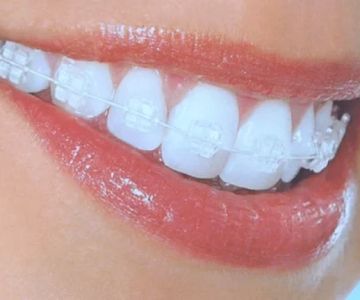What Are the Different Methods of Orthodontic Treatment?
Orthodontic treatment has come a long way from just metal wires and brackets. Today, there are numerous options available to correct misaligned teeth, catering to different preferences, needs, and budgets. Whether you're in your mid-teens or late forties, seeking orthodontic care is not just for aesthetics but also plays a crucial role in oral health. With innovations happening frequently, understanding these options is essential for making informed decisions. This article delves into various orthodontic treatments, providing insights into which might suit you best.
Traditional Metal Braces
Understanding the Basics: Traditional metal braces are a tried-and-tested method for correcting misaligned teeth. Composed of high-grade stainless steel, they consist of brackets affixed to each tooth and connected by a wire. The dentist or orthodontist periodically tightens the wire, gradually shifting teeth into their desired position.
Benefits and Considerations: Metal braces are highly effective for handling severe orthodontic issues, including crooked teeth, overbites, and underbites. Despite their effectiveness, one of the primary considerations is appearance. While they are more noticeable than other options, modern designs have become more sleek and comfortable. Treatment times typically range from 18 months to three years, depending on the complexity.
Clear Aligners
An Overview: Clear aligners, popularized by brands like Invisalign, offer a less visible alternative to traditional braces. They comprise a series of custom-made, removable trays that fit snugly over the teeth, gently steering them into alignment over time.
Advantages: The primary advantages include their near-invisible appearance and the ability to remove them when eating or cleaning teeth, thereby promoting better oral hygiene. However, they require significant discipline, as failing to wear them for the recommended 20-22 hours per day can extend the treatment duration.
Suitability: Clear aligners are ideal for individuals with mild to moderate alignment issues. They are less effective for complex cases, making it crucial to have a detailed consultation at Dentistry Toothtruth before deciding.
Lingual Braces
Behind the Scenes: Lingual braces are similar to traditional braces but with a key difference: the brackets and wires are placed on the back side of the teeth, making them virtually invisible from the front.
Who Can Benefit: They are an excellent choice for individuals who prioritize aesthetics but require the robust correction power of conventional braces. These braces are custom-made, which can make the initial fitting more complex and treatment slightly longer.
Challenges: Because they are placed closer to the tongue, some users initially experience changes in speech and minor discomfort, which typically subside with time.
Ceramic Braces
Similar Yet Different: Ceramic braces function much like metal braces but employ clear or tooth-colored brackets, making them less conspicuous.
Pros and Cons: They blend more seamlessly with natural teeth, which makes them a preferred option for adults concerned about aesthetics. However, they can be more fragile and slightly more expensive than metal braces.
Self-Ligating Braces
Efficient and Comfortable: Self-ligating braces use a clip instead of elastic ties to hold the archwire, reducing friction and discomfort.
Speed and Comfort: These braces can result in quicker appointments and potentially faster treatment times, but their suitability may vary depending on the specific orthodontic needs.
In conclusion, each orthodontic treatment method offers unique benefits, and the choice largely depends on personal preferences, budget, and the complexity of the dental issues. Consulting with a professional at Dentistry Toothtruth can help navigate these options, ensuring the chosen method aligns with your needs and lifestyle. Taking proactive steps towards correcting orthodontic issues not only enhances one's smile but also contributes to overall oral health. If you're considering treatment, evaluate these methods thoroughly and take the next step towards achieving a confident, well-aligned smile.




 Westgate Dental Arts
Westgate Dental Arts Coventry Family Dental
Coventry Family Dental Familia Dental
Familia Dental Dr. Daniel S. Fife, DDS
Dr. Daniel S. Fife, DDS Dentistry At Suburban Square: Michael I. Wollock, DMD
Dentistry At Suburban Square: Michael I. Wollock, DMD Comfort Care Dental
Comfort Care Dental The Importance of Oral Health Education During Pregnancy for a Healthy Pregnancy
The Importance of Oral Health Education During Pregnancy for a Healthy Pregnancy Why Skipping Dental Checkups Can Lead to Bigger Oral Health Problems
Why Skipping Dental Checkups Can Lead to Bigger Oral Health Problems Advantages of Porcelain Dental Restorations
Advantages of Porcelain Dental Restorations Best Tips for Brushing Your Teeth Properly for Healthy Gums: Essential Techniques for Oral Health
Best Tips for Brushing Your Teeth Properly for Healthy Gums: Essential Techniques for Oral Health How Can Diabetes Cause Tooth and Gum Problems? Preventing and Managing Oral Health Issues
How Can Diabetes Cause Tooth and Gum Problems? Preventing and Managing Oral Health Issues Healthy Habits for Promoting Good Oral Health and Hygiene: Tips for a Healthy Smile
Healthy Habits for Promoting Good Oral Health and Hygiene: Tips for a Healthy Smile